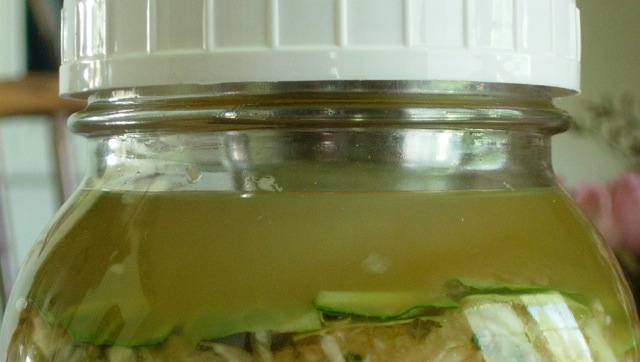Posted by Bill Hettig on 25th Feb 2015
Advanced Sauerkraut Making
In Alsace in NE France, by the 16th century, “a trade existed known as surkrutschneider—literally, sauerkraut tailor." Their trade was to make individual recipes of sauerkraut for the family that hired them, "using anise seeds, bay leaves, elderberries, fennel, horseradish, and other herbs and spices.”1 As a Perfect Pickler you are your own designated surkrutschneider.
Over time I have been honing ways to increase the brine capture in sauerkraut and slaw making with the Perfect Pickler® Fermenting Kit. Traditional crock fermentors don’t face this situation as the brine has headroom to rise with the brine expansion that occurs in the early onset of fermentation.
Here is a workaround with Perfect Pickler®.

Note the Brine Overflow Cup in position and the cabbage leaf rounds laying on top of the shredded cabbage
Here’s the overview. With a whole head of cabbage you carefully cut out the core to at least an inch thick. You then peel off and save the top two outer leaves, which are trimmed and used to hold down the shredded cabbage packed into the fermentor jar, leaving 3 inches of airspace in the jar. The two reserved leaves are trimmed to fit the circumference of the jar, and the cabbage core is used with the Brine Overflow Cup to keep all cabbage material below the brine. In effect, the Brine Overflow Cup sits atop the cabbage core and when the Lid is threaded down, it holds the cabbage leaves and shredded cabbage below the brine. Over the next few days you can watch the brine climb all the way to the top of the jar, and even into the Brine Overflow Cup. After fermentation is complete, you pour the collected brine back into the jar and all the brine will reabsorb into the kraut.
Brine created from a fresh, heavy fall cabbage can be extensive. After only one day, I smell the sweet kraut brine from my latest batch.
Watch this short video to learn the technique
History of Salt<, by Mark Kurlansky

